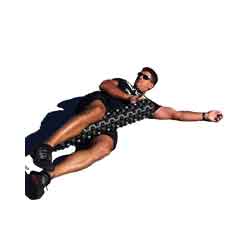If you are anything like me, you have struggled with toe, foot, and calf issues for years. It came to my attention at 19 years of age that my shoes were NOT the right size for my feet.  I joined the United States Marine Corps,and amongst the moments of shear terror, aggression, and exhaustion I learned a few things that weren't specifically about killing my enemy. One very important lesson I learned on day one: my footwear had been too small for my feet for most of my life.
I joined the United States Marine Corps,and amongst the moments of shear terror, aggression, and exhaustion I learned a few things that weren't specifically about killing my enemy. One very important lesson I learned on day one: my footwear had been too small for my feet for most of my life.
I was wearing a size 9 shoe when I entered MCRD San Diego to begin my Marine Corps training. They collect all your personal clothing, wallet, jewelry, etc. when you enter and issue you all the clothing, toiletries, and other personal effects you will use while on your 13-week journey to becoming a killing machine. When they issued me size 10.5 boots I responded "I wear size 9," to which they responded "WHO THE F*&% HAS BEEN PUTTING YOU IN SHOES TOO SMALL FOR YOUR FEET?!?!?!"
That was 25 year ago, and it has taken me the majority of that time to undo the severe restriction of ROM and function in my feet and toes that was a product of "binding" my feet in footwear a size-and-a-half too small for the majority of my formative years. Amazing how hard it can be to overcome a few years of poor choices...
About ten years ago I began wearing Nike Free shoes.
 Not only were they SUPER comfortable (like wearing a sock and walking on marshmallows), they could roll up into a ball or move in all the amazing ways a foot is supposed to be able to!
Not only were they SUPER comfortable (like wearing a sock and walking on marshmallows), they could roll up into a ball or move in all the amazing ways a foot is supposed to be able to!
That lead to "zero-drop" shoes like my Merrell Trail Gloves. I still own 5 pairs of these and LOVE them!

Which then lead me to Vibram Five Fingers. Pictured here are the Treksport Sandals, my FAVORITE of the Five Finger lineup!
And I've experimented along the way with numerous massage tools, compression garments and tools, toe spreaders, toe exercise devices, etc. While still continuing to work on my toe and foot function, the work has paid off. I no longer experience severe calf and foot cramps. I have MUCH better hopping endurance than I ever had in my youth. I can walk barefoot on stone pebbles now (which I could not do when I was ten years old). I was also able to resolve significant nerve pain in my toes without surgery or drugs. Below is a short video from one of the influences along my journey to happier feet. Please take a moment to watch and learn what you can do in your free time to help yourself have set of "happy feet."









